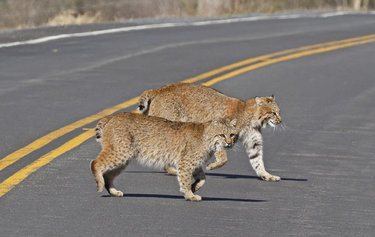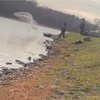Grant will help wildlife move more safely
Two not-for-profit conservation organizations have together received a $88,744 grant to look at wildlife connectivity in Glenville Hill in the town of Glenville, and the “Noses” in the town of Sprakers.
Roads in this area are a significant challenge for wildlife movement, but culverts and bridges, when designed correctly, can be used as a safe passageway for animals, reducing car collisions, and mortality.
The Nature Conservancy will assess roads in the area, including the Thruway, to determine if upgrades are needed to help wildlife movement.
“The Resilient and Connected Network of lands was identified and mapped over a 10-year period by Nature Conservancy scientists to create a roadmap of natural highways and neighborhoods where plant and animal species have the best chance to move away from growing climate threats and find new places to call home.
“We are thrilled to partner with the Mohawk Hudson Land Conservancy to fortify a pathway between two climate strongholds, the Catskills and the Adirondacks,” said Alissa Fadden, wildlife connectivity project manager, in a release announcing the grant.
The Mohawk Watershed grant came through the New York State Department of Environmental Conservation’s Mohawk Watershed Program. The grant stream is meant to protect the Mohawk Basin and help lessen the impacts of climate change.
Working with willing landowners and communities to identify the mutual benefits to people, MHLC will conserve private lands to reduce development and provide protected areas for wildlife along these corridors. Creating a buffer of protected lands near busy road crossings can provide respite for wildlife migrating across an area.
“This protection work is critical to balancing the built environment with the natural environment for people and wildlife,” said MHLC Conservation Director Sarah Walsh in the release. “Through this process, we will have a plan to make roads safer for drivers and for the wildlife that need to cross these areas.”
Work is expected to start in early 2021, beginning with a broader planning document for land protection and helping wildlife movement in the targeted areas.



